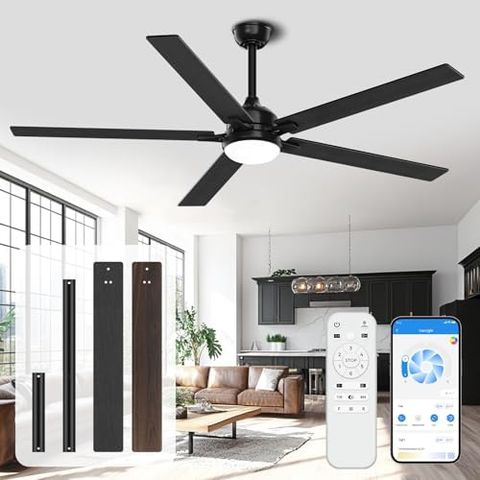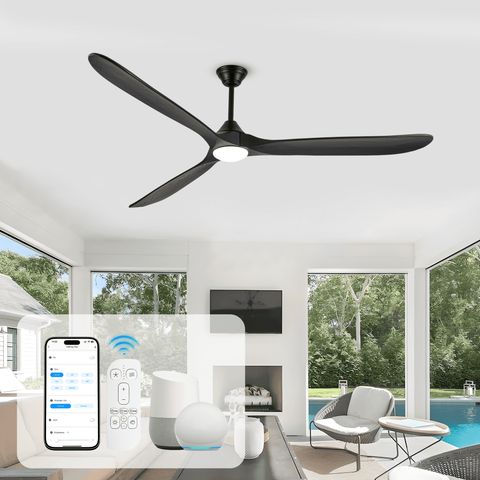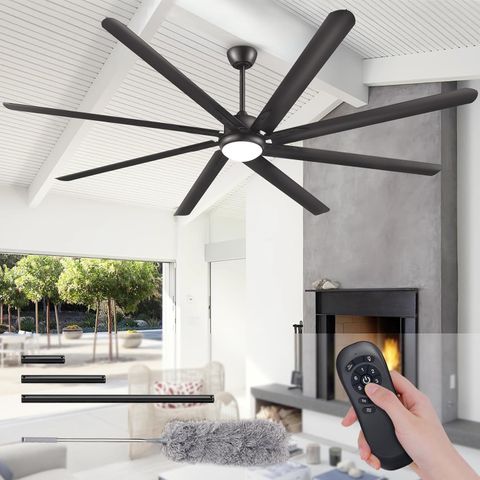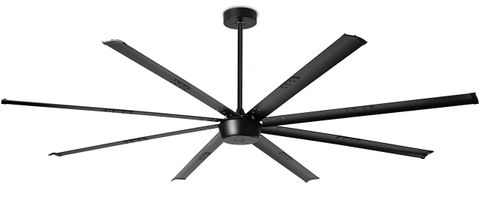Picture this: a sweltering summer evening, a large outdoor space filled with people, and a ceiling fan spinning away. But what’s really powering that rotation? Is it a traditional AC motor or something more modern – a DC motor system? This question isn’t just about tech jargon. It’s about comfort, efficiency, and smart choices when it comes to outdoor living spaces.
Outdoor ceiling fans have become essential fixtures in modern homes and commercial spaces. Whether it’s a patio, deck, or covered area, these fans provide relief from heat and humidity. But behind every spinning blade lies a crucial decision – what kind of motor powers that fan? Traditional AC motors have dominated the market for decades, but DC motor technology is rapidly gaining ground. Understanding the differences between these two systems isn’t just about technical specifications. It’s about making informed decisions that affect everything from energy bills to maintenance schedules.
The Power Source: AC vs DC Fundamentals
Let’s start with the basics. Traditional ceiling fans use alternating current (AC) motors, while DC motor systems run on direct current. Think of it like comparing a bicycle with a motorcycle engine. Both get you from point A to point B, but they work differently. AC motors typically operate at fixed speeds and require larger, more robust components. They’re reliable but often inefficient. DC motors, on the other hand, offer variable speed control and can be more precise in their operation. The fundamental difference lies in how they convert electrical energy into mechanical motion. AC motors spin at a constant rate determined by the power supply frequency, whereas DC motors can adjust their speed based on demand. This flexibility makes DC systems particularly attractive for outdoor applications where varying conditions might call for different airflow needs.
Energy Efficiency: A Clear Winner?
Here’s where things get interesting. When it comes to energy consumption, DC motor systems often shine brighter. Traditional AC motors typically consume more power to achieve the same airflow output. The reason? AC motors are less efficient at converting electricity into rotational force. DC motors, however, can reduce energy usage by up to 70% compared to their AC counterparts. This isn’t just theoretical – real-world testing shows significant savings. For example, a large outdoor ceiling fan running at full speed might use 60 watts with an AC motor but only 20 watts with a DC motor. That’s a substantial difference over time. But there’s a catch. The efficiency gains depend heavily on proper installation and quality components. Not all DC motors are created equal, and some cheaper versions might not deliver on their promises. The investment in a quality DC system often pays off quickly through reduced electricity costs.
Speed Control and Performance
Control is king when it comes to comfort. Traditional AC motors usually offer limited speed settings, often just three or four options. This means you’re stuck with predetermined speeds that might not perfectly match your environment. DC motors, however, provide smooth, continuous speed adjustment. Want a gentle breeze? You can dial it down precisely. Need maximum airflow? You can ramp it up gradually. This fine-tuned control becomes especially important in outdoor settings where weather conditions change frequently. Imagine a sudden gust of wind making you want to slow down the fan, or a cool evening where you’d prefer a whisper-quiet operation. DC systems handle these situations seamlessly. The performance difference isn’t just about convenience – it’s about creating a truly personalized comfort experience. Many DC motor fans now come with smart controls that can integrate with home automation systems, allowing for even more sophisticated management of airflow.
Maintenance and Longevity
What happens after you’ve made your purchase? Maintenance matters more than you might think. Traditional AC motors tend to last longer due to their simpler design and fewer electronic components. They’re built to withstand the test of time, especially in harsh outdoor environments. However, they require more frequent adjustments and may develop issues over time. DC motors, while generally more reliable in terms of consistent performance, can be more sensitive to environmental factors. Moisture and temperature fluctuations can impact electronic components. The good news is that modern DC systems are designed with outdoor durability in mind. Many feature enhanced weatherproofing and protective circuits. Regular maintenance still matters for both types, but DC motors often require less frequent servicing. Some users report needing repairs less often with DC systems, though this varies significantly based on brand quality and installation practices. The key is choosing a reputable manufacturer with proven track records in outdoor applications.
Cost Considerations: Upfront vs. Long-term
The initial price tag can be a big factor in decision-making. Traditional AC motor fans typically cost less upfront, sometimes by quite a margin. You might find a quality AC motor fan for around $150, while a comparable DC motor fan could set you back $300 or more. But here’s where the story changes. The long-term costs tell a different tale. Energy savings alone can offset the higher initial investment within a few years. A typical outdoor fan might run for 8 hours daily, consuming hundreds of kilowatt-hours annually. Over five years, those savings add up quickly. Additionally, DC motors often require fewer replacements and repairs. The longevity advantage, combined with reduced energy consumption, creates a compelling case for the higher upfront cost. Consider also the added value of features like smart controls, remote operation, and better integration with modern home systems. These extras often justify the premium price point for many consumers.
Environmental Impact and Sustainability
We’re increasingly thinking about our environmental footprint, and that includes the products we choose for our homes. DC motor systems generally offer better sustainability metrics. Lower energy consumption directly translates to reduced carbon emissions, especially when paired with renewable energy sources. Many DC fans also feature LED lighting systems that are already more energy-efficient than traditional bulbs. The manufacturing process for DC motors is also becoming more environmentally conscious, with manufacturers focusing on recyclable materials and reduced waste. Outdoor fans are often used during peak energy consumption periods, so choosing an efficient system helps reduce overall demand. For environmentally conscious homeowners, this is a significant consideration. The ripple effect of widespread adoption of DC motor technology could contribute meaningfully to broader energy conservation efforts. Plus, many modern DC systems are designed with future upgrades in mind, reducing the need for complete replacements.
Choosing between traditional AC and DC motor systems for large outdoor ceiling applications involves weighing multiple factors. While AC motors offer proven reliability and lower initial costs, DC systems bring energy efficiency, superior control, and modern features that enhance user experience. The best choice depends on your priorities – whether you value immediate savings or long-term benefits, simplicity or sophistication. As technology continues advancing, DC motor systems are likely to become the standard rather than the exception. The key is understanding your specific needs and selecting a quality product that fits both your budget and lifestyle requirements. Whether you’re upgrading an existing space or planning a new outdoor area, this comparison should serve as a helpful foundation for making an informed decision that balances performance, efficiency, and value.














